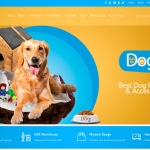Learn what an E commerce is and the different types that exist.
- August 22, 2022
- Ecommerce

Learn what an E-commerce is , 'cause has been on the rise for years and with the COVID Pandemic crisis has further accelerated its penetration among consumers. So here we are going to see what exactly an E commerce is, what types there are and the pros and cons of this strategy.
Learn what is an E-commerce.
 E-commerce or electronic commerce is the practice of buying and selling products over the internet. As well as that called "E-commerce" to each online store that is dedicated to this business.
E-commerce or electronic commerce is the practice of buying and selling products over the internet. As well as that called "E-commerce" to each online store that is dedicated to this business.
The E-commerce sector has been one of the most disruptive in recent years; because it has revolutionized traditional commerce by offering an unprecedented level of comfort and customization. For this reason, electronic commerce has become the basis of the business model for many brands.
Types of Electronic commerce.
We can classify e-commerce based on the audience they are targeting or their business model.
- B2C (Business to Consumer): E-commerce aimed directly at the final consumer. It is the most frequent type and within it we can find many examples, from online hardware stores to ecological fashion stores.
- B2B (Business to Business): E-commerce whose target audience is other companies, for example, office supply stores.
- C2C (Consumer to Consumer): This typology has flourished in recent years with the rise of online sales. These are consumers who sell directly to other consumers, generally second-hand products.
In addition to these three types, which are the most common, we can also find alternatives such as:
C2B (Consumer To Business)
G2C (Government to Consumer)
B4B (Business for Business)
B2E (Business to Employer).
Depending on the business model.
- Own online store: The simplest model, it simply consists of a digital version of the physical stores of the brand, which sells its own products. It can be an exclusively online business, or it can have both ecommerce and physical stores.
- Marketplace: A marketplace is a kind of "macro store" that includes various sellers. The best known example is Amazon, where anyone can sell for a commission.
- Dropshipping: For the customer, a dropshipping is no different from a standard online store; But instead of managing their own inventory, in this case the seller is limited to showing and promoting the products and a third party is in charge of making the shipments.
- Affiliate: In digital marketing, the affiliate model consists of using third parties to promote products or services in exchange for a commission. The affiliate places links to refer the customer to the other store; where the sale will be closed. For example, the affiliation with Amazon is quite frequent.
- Subscription: Instead of selling products or services individually; in this case what is sought is that consumers contract a monthly membership and receive products at home on a regular basis; For example: this is the case of the famous "surprise boxes", which today are implemented in many sectors.
Pros and cons of Electronic commerce as a business model.
 Ecommerce has been a revolution in the way of selling, and can be adapted to all kinds of sectors. But before you launch your branded E-Commerce; take a look at these pros and cons and think about how it would fit into your business.
Ecommerce has been a revolution in the way of selling, and can be adapted to all kinds of sectors. But before you launch your branded E-Commerce; take a look at these pros and cons and think about how it would fit into your business.
Pros of E-commerce.
- Greater reach for your business: With an online store, you will automatically be accessible from all over the world (although you will always have to take into account which countries you can ship to and which ones you cannot). In contrast, physical stores always have a limited reach range by definition.
- Lower costs: Setting up an online store has a very low initial cost, especially compared to renting or buying a place. With this, the barriers to entry are much lower and you can definitely get better margins than with a traditional store.
- Available 24/7: The vast majority of physical stores have limited opening and closing hours, and the longer they are open, the higher the personnel costs. Contrary to e-commerce they never stop giving service
- Growth potential: There are no limits to the number of people who can "enter" your ecommerce at the same time (as long as you have hired a good server, of course), which allows your business to grow.
Cons of e-commerce.
- Difficulties in accessing certain sectors: although online shopping is becoming more and more popular, there are still sectors of the population that are not very familiar with them and do not feel comfortable buying online, for example, the elderly.
- It is impossible to see, touch or taste the products: in products where sensory qualities are very important or that require testing, such as clothing, E-commerce introduces a barrier that is difficult to overcome. We can partially solve it by providing detailed descriptions, photos and videos of the products and having a good return policy.
- Trust issues. Some users still do not trust electronic payment systems. Trust seals and SSL encryption can help us alleviate this problem.
- Greater competition. As the barriers to access to electronic commerce are very low, there are many more brands that can open their own online store. Therefore, we will have to make a certain investment of time and resources to stand out and be visible.












